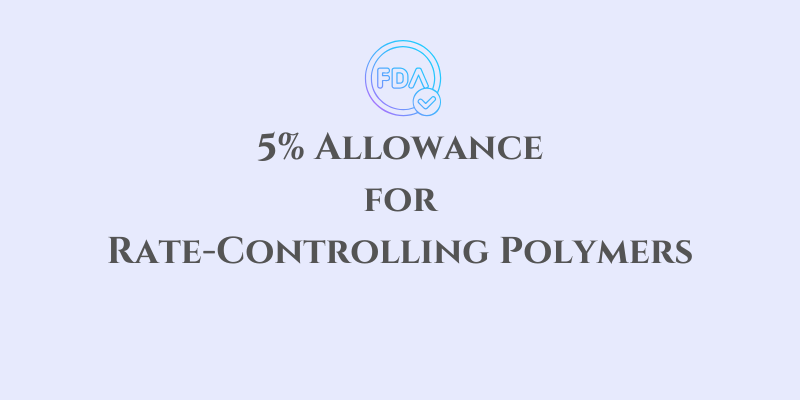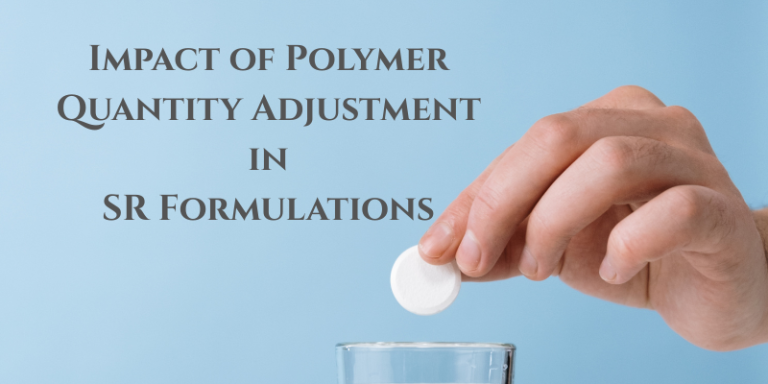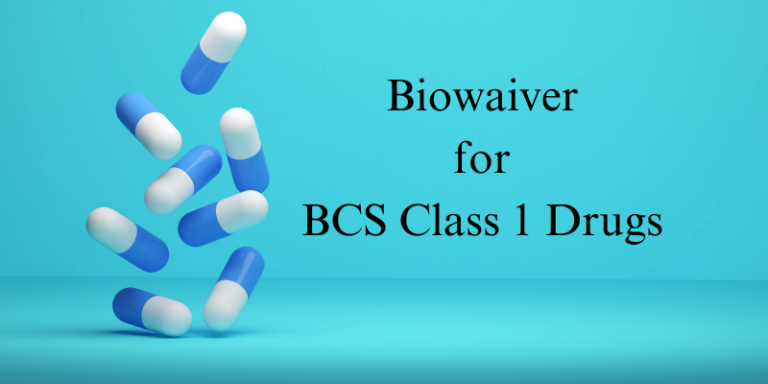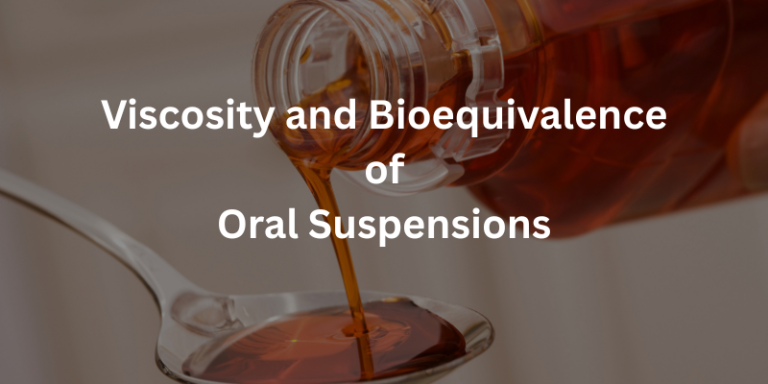Misinterpreting FDA’s 5% Allowance for Rate-Controlling Polymers
One of the key lessons we learned in addressing biowaiver requests for non-RLD strengths until 2022 was a fundamental misinterpretation of FDA’s 5% allowance for rate-controlling polymers (RCPs).
Initially, we assumed that as long as the total amount of RCPs remained unchanged, we could increase one polymer by 5% and simultaneously decrease another polymer by the same amount, keeping the net RCP level constant. However, this assumption was incorrect, as clarified when we received an FDA deficiency letter.
What Was the Misinterpretation?
Let’s take an example where a formulation contains two rate-controlling polymers:
Methocel K4M = 100 mg per tablet
Hydroxyethyl Cellulose (HEC) = 25 mg per tablet
Total RCP content = 125 mg
We initially believed that reducing Methocel K4M by 5% (to 95 mg) and increasing HEC by 5 mg (to 30 mg) would be acceptable, as the total RCP remained 125 mg. However, we later understood that FDA’s 5% guideline applies to each polymer individually—not to the total effective polymer content.
Why Is This Approach Wrong?
In our example, reducing Methocel K4M from 100 mg to 95 mg is a 5% reduction, which is within FDA’s allowance.
However, increasing HEC from 25 mg to 30 mg represents a 20% increase (not 5%), which violates the guideline.
FDA allows ±5% change for each polymer individually, not based on the total polymer content.
The Correct Approach:
To comply with FDA’s guideline, we must ensure that each individual polymer changes by no more than ±5%. This means:
Methocel K4M could be changed within ±5% of its own quantity (i.e., 95–105 mg).
HEC could be changed within ±5% of its own quantity (i.e., 23.75–26.25 mg).
The total RCP can change slightly, but each component must independently adhere to the 5% allowance.
Key Takeaway for Formulation Scientists & Regulatory Teams
1. When modifying rate-controlling polymers, do not assume that maintaining the total RCP content unchanged is sufficient.
2. Each polymer must be evaluated separately to ensure it remains within the ±5% regulatory allowance.
3. Understanding these nuances is critical for successful biowaiver justifications and avoiding regulatory deficiencies.
This experience was a valuable learning curve for us and can help others avoid similar mistakes in formulation development.
Read also:
- Key Considerations for API Source Change in Formulation
- Impact of Polymer Quantity Adjustment in Sustained-Release Formulations
- Regulatory Strategies for Excipient Grade Changes Across Global Markets
Resource Person: Moinuddin syed. Ph.D, PMP®







